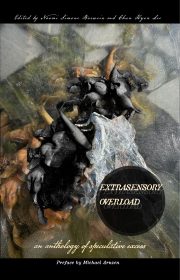Sourcing Art on a Budget
By Austin Conrad
Editor’s Note: This is the second in a two-part series from Austin Conrad on acquiring illustrations for tabletop games. Part 1 focused on working directly with an artist, while Part 2 presents additional resources.
High-quality art plays an important role in creating the well-presented products expected by most consumers of tabletop games, but commissioning bespoke art can be expensive. Like a novel’s cover, an RPG’s interior graphics evoke the game’s aesthetic and market the game to the audience. Many tabletop writers—especially new creators—don’t have the resources to commission the expected quantity of art. What, then, are a tabletop writer’s ethical alternatives?
Stock Art
Stock art is an art asset sold online for use in commercial products. The most famous source of stock art is probably Getty Images. This retailer’s photo library provides images to an enormous number of media outlets. A stock art purchase pays for a license to use the image in specified ways. This is typically a one-time payment, although some retailers (such as Creative Market or Getty Images) provide subscription services.
As a tabletop writer, I find that stock art sold by other tabletop publishers is more useful than mainstream sources. Just as DriveThruRPG is the largest online storefront for tabletop games, it’s also my preferred source of stock art. Some publishers’ stock art is ubiquitous throughout the industry, such as Fat Goblin Games. DriveThruRPG is a useful stock art retailer because illustrations sold there are typically created for a specific gaming genre (such as cyberpunk or medieval fantasy). In addition, stock art on DriveThruRPG is often more budget-friendly than assets from mainstream sources. Discount bundles collecting dozens of images are often available and may be further discounted during DriveThrRPG’s semi-annual sales.
The popular indie gaming storefront itch.io is also useful for sourcing stock art. Like DriveThruRPG, an advantage of itch.io is that hosted assets are more easily applicable for use in game products.
Royalty-Free Images
Another useful resource is sites that host royalty-free images for personal and commercial use. These images are typically photos, not illustrations. They are uploaded by artists to the site for others to use. One site I find particularly useful is Unsplash, because of the service’s very clear permissions regarding use in commercial products.
Photo resources often don’t cohere well with non-photographic art in a tabletop game. Tweaking photographs with the filters available in an image editing program (such as Affinity Photo or Adobe Photoshop) helps integrate separate art modes into a unified aesthetic. Some online services are also available, but most do not allow commercial use of edited images.
Public Domain
The public domain, our cultural inheritance, provides a variety of high-quality art to freely use. When using the public domain, the tabletop writer’s main challenge is not to find suitable art but to find a high-quality image of the artwork. For example, there are abundant photos of the Mona Lisa, but high-resolution photos suitable for print products are less common.
When perusing artwork from the public domain, my preferred source is the Wikimedia Commons. The Wikimedia Commons hosts millions of high-quality images under a variety of licenses. I find Wikimedia to be a useful source of public domain artwork in particular because of the foundation’s stance that “faithful reproductions of two-dimensional public domain works of art are public domain.” Consequently, a creator can trust they are permitted to use a photo of the Mona Lisa on the Wikimedia Commons in commercial products. A similar photo found elsewhere may not have similarly explicit permissions. Another benefit of the Wikimedia Commons is the site’s clear attributions of artist, year, and public domain status.
Licensing
It is important to pay close attention to an asset’s license when sourcing budget-friendly art for your product. Finding images is relatively easy, but many free resources provide images for personal use, not commercial use. Even if a resource advertises itself as “royalty-free,” that does not mean the images are free to use. There is no royalty to pay per use of the asset, but the site will often require a flat fee for a commercial use license.
Another distinction is single-use licenses versus unlimited licenses. This is most important when purchasing stock art. Stock art with a single-use license may be used in a single product, while an unlimited license allows use in any number of products. Of course, the creator can purchase single-use stock art multiple times if they wish to use it in multiple products. In my experience, most stock art on DriveThruRPG or itch.io is licensed for unlimited use. This is not universal, so it’s important to read each stock asset’s license before inclusion in a product.
AI Art
Finally, be watchful for the use of procedurally generated (or “AI”) graphics when seeking budget-friendly art. Most resources at minimum require a disclaimer when an image is machine-generated, but this is not universal. The advantage of using stock art and other resources is that it still generally benefits artists. Many artists directly sell their own work as stock assets—indeed, a few of my own relationships with artists began because I liked their stock work—and they receive revenue from its sale. Artists who voluntarily upload work to Unsplash aim to increase their exposure and creative network, leading to commissions.
The use of machine-generated graphics does not benefit artists and ultimately harms the tabletop industry’s economic ecosystem. Further, the use of machine-generated graphics is not pragmatic. Both consumers and publishers of tabletop games have been pushing against the use of this technology in the industry. With public statements from publishers such as Paizo and Chaosium, as well as industry organizations such as SFWA, it seems likely to me that tabletop writers who use procedurally generated graphics will be selling to a reduced audience and see a decline in sales.
 Austin Conrad is a full-time writer and game designer. He is best known for his indie publications for RuneQuest. His work for other systems has been published by EN Publishing and Menagerie Press. Austin’s most recent release is “To Hunt a God,” an adventure in which the players quest into a magical forest to perform an act of divine euthanasia. You can learn more about Austin’s work on his website, akhelas.com.
Austin Conrad is a full-time writer and game designer. He is best known for his indie publications for RuneQuest. His work for other systems has been published by EN Publishing and Menagerie Press. Austin’s most recent release is “To Hunt a God,” an adventure in which the players quest into a magical forest to perform an act of divine euthanasia. You can learn more about Austin’s work on his website, akhelas.com.


